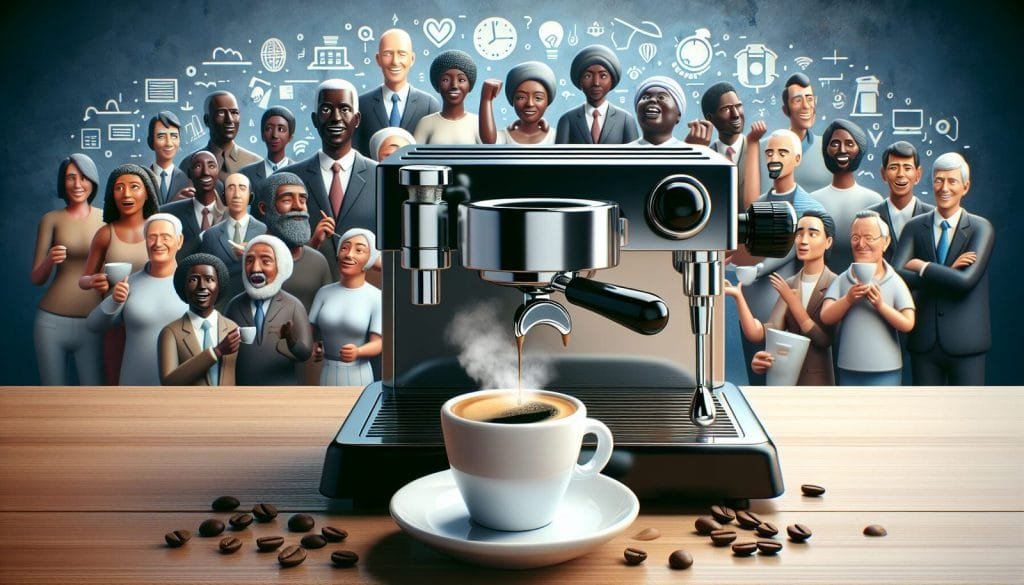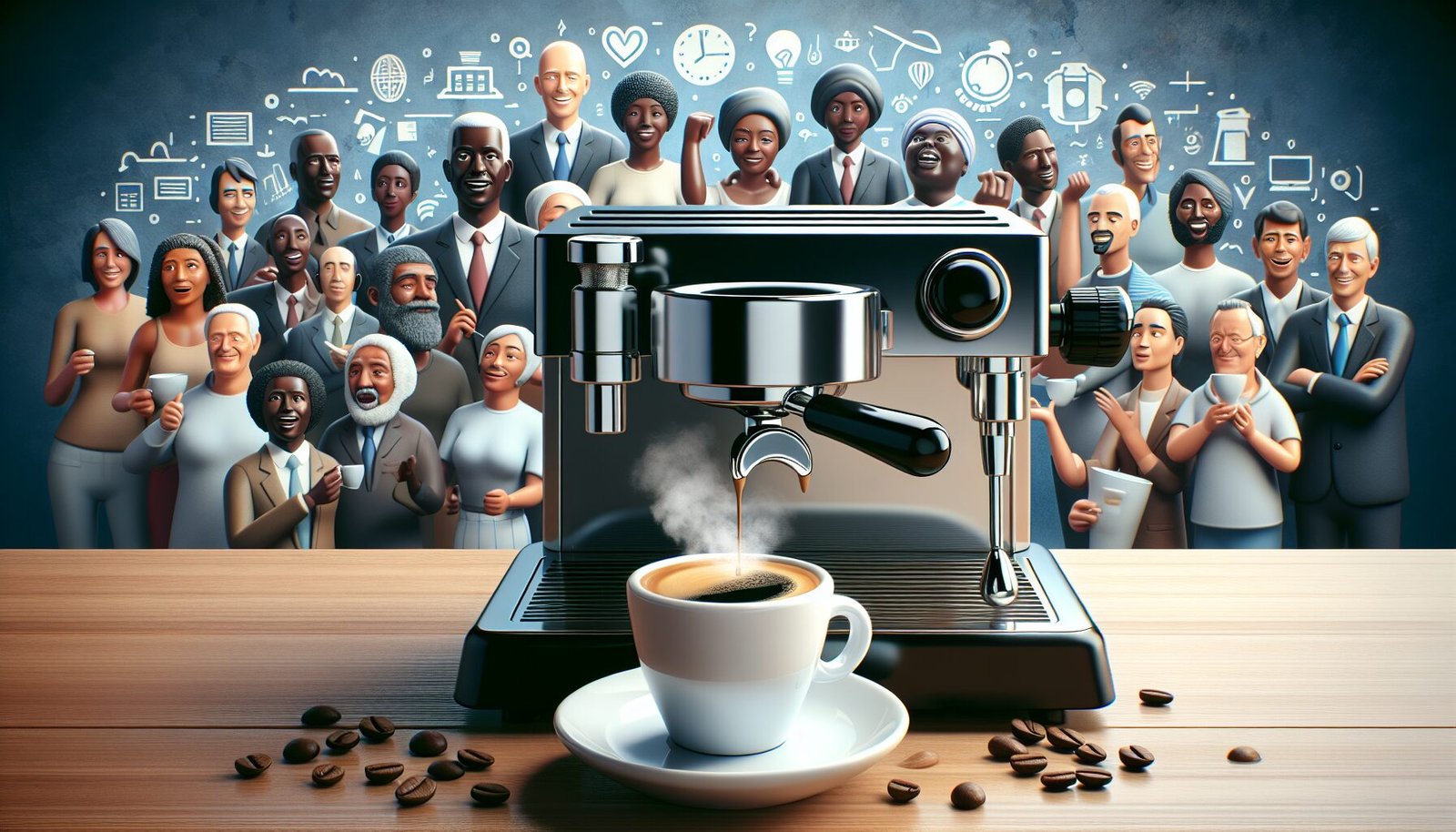Espresso, a concentrated and stimulating beverage, has become increasingly popular amongst coffee enthusiasts. This article aims to explore the underlying reasons why individuals gravitate towards espresso rather than conventional coffee. By examining its unique qualities and the cultural significance attached to it, we can gain a deeper understanding of the appeal behind this robust and invigorating brew.
Differentiating Espresso and Coffee
espresso and coffee are two popular beverages consumed worldwide. Although they both originate from the same source, coffee beans, there are distinct differences between the two. This article aims to explore and analyze the differences in terms of extraction process, brewing time, caffeine content, taste and flavor, convenience and speed, serving size, culture and tradition, professional barista techniques, and health benefits.
Extraction Process
Espresso Extraction
Espresso, derived from Italian meaning “expressed” or “forced out,” is a brewing method that utilizes high-pressure water to extract flavors from finely ground coffee beans. The espresso extraction process involves a tightly packed coffee bed, known as a puck, which water is forced through at a pressure of approximately 9 bars. The high pressure ensures a rapid extraction, resulting in a concentrated and robust beverage.
Coffee Brewing
On the other hand, traditional coffee brewing typically involves a slower extraction process. Water is poured over coarsely ground coffee beans, allowing the flavors to infuse gradually. This method usually requires a filter, which separates the extracted coffee from the grounds. The brewing process may vary, including methods such as drip brewing, French press, or pour-over.

Brewing Time
Espresso Brewing Time
One of the differentiating factors between espresso and coffee is the brewing time. The espresso brewing process is remarkably quicker compared to traditional coffee brewing. In commercial espresso machines, it takes approximately 25 to 30 seconds to extract a 1-ounce shot of espresso. The shorter brewing time highlights the intense and complex flavors that can be achieved through the rapid extraction process.
Coffee Brewing Time
Coffee, brewed through conventional methods, generally takes longer than espresso. The brewing time can vary depending on the method used and personal preferences. For instance, drip brewing may take around 4 to 6 minutes, while a French press may require 2 to 4 minutes. This extended brewing time allows for a slower extraction and a more subtle flavor profile.
Caffeine Content
Espresso Caffeine Content
Caffeine content is another aspect that sets espresso apart from regular coffee. Contrary to popular belief, espresso does not have a higher caffeine content than coffee. In fact, due to its concentrated nature, a single shot of espresso contains less caffeine than a typical cup of coffee. On average, a 1-ounce shot of espresso contains approximately 63 milligrams of caffeine. However, since espresso is typically consumed in smaller quantities, the cumulative caffeine intake may differ.
Coffee Caffeine Content
In comparison, the caffeine content of coffee can vary significantly depending on factors such as the type of beans, roast level, and brewing strength. An 8-ounce cup of coffee generally contains around 95 milligrams of caffeine. The larger serving size of coffee allows for a higher caffeine intake per cup compared to espresso.

Taste and Flavor
Espresso Taste and Flavor
When it comes to taste and flavor, espresso offers a distinctive experience. Due to the concentrated extraction process, espresso possesses a bold, strong, and often bitter flavor profile. The intense flavors result from the high-pressure extraction method, which allows for the extraction of both desirable and undesirable compounds from the coffee beans. Additionally, espresso often exhibits rich crema, a reddish-brown foam layer, which adds to the complexity of its taste.
Coffee Taste and Flavor
Coffee, brewed using traditional methods, tends to have a milder and smoother taste compared to espresso. The longer brewing time allows for a more complete extraction, resulting in a well-rounded flavor profile that showcases the unique characteristics of the coffee beans. The taste of coffee can vary depending on factors such as the origin of the beans, the roast level, and the brewing equipment used.
Convenience and Speed
Espresso Convenience and Speed
Espresso is renowned for its convenience and speed of preparation. It is often favored by those seeking a quick and efficient caffeine fix. The compact size of the espresso machine allows for easy placement in both commercial and home settings. With just a push of a button, a shot of espresso can be extracted within seconds, making it ideal for busy individuals or those on the go.
Coffee Convenience and Speed
While traditional coffee brewing methods may require more time and attention, they offer versatility and a hands-on experience. Brewing coffee allows individuals to customize their drink based on personal preferences, experiment with different brewing techniques, and enjoy the process of making coffee. However, it is worth noting that the convenience and speed of coffee brewing can vary depending on the chosen method and equipment.
Serving Size
Espresso Serving Size
Espresso is typically served in much smaller quantities compared to regular coffee. A standard shot of espresso is usually around 1 ounce (30 milliliters). This concentrated serving size allows for a more intense flavor experience and provides the foundation for various espresso-based beverages, such as cappuccinos or lattes.
Coffee Serving Size
In contrast, a typical cup of coffee has a larger serving size ranging from 8 to 12 ounces (240 to 355 milliliters), or even more. The increased serving size provides a more prolonged consumption experience and allows coffee enthusiasts to savor the flavors over a more extended period.
Culture and Tradition
Espresso Culture and Tradition
Espresso has deep-rooted cultural and traditional significance in several countries, particularly in Europe. Countries such as Italy, where espresso originated, have a strong coffee culture that revolves around the enjoyment of small, strong shots of espresso. Espresso is often seen as a social drink, enjoyed in coffee shops or at home with family and friends. The Italian espresso culture emphasizes the ritual and camaraderie associated with the beverage.
Coffee Culture and Tradition
Coffee, in its various forms, is celebrated in diverse cultures worldwide. Each country has its unique coffee traditions, rituals, and preferred brewing methods. For instance, Turkish coffee is known for its lengthy preparation process and traditional brewing techniques, while Scandinavian countries have a strong emphasis on light roasts and specialty coffee. In many cultures, coffee plays a significant role in social gatherings, providing a bonding experience and a reason to come together.
Professional Barista Techniques
Espresso Barista Techniques
The art of making espresso has inspired the development of professional barista techniques that elevate the beverage’s quality and presentation. Skilled baristas focus on factors such as the grind size, water temperature, tamping pressure, and extraction time to ensure the perfect shot of espresso. Techniques, such as latte art, are also employed to create visually stunning designs on the surface of milk-based espresso beverages, showcasing the barista’s skill and creativity.
Coffee Barista Techniques
Baristas who specialize in coffee brewing methods utilize their expertise to extract the best possible flavors from the coffee beans. They may employ techniques such as precise water-to-coffee ratios, adjusting grind size, and controlling water temperature. Additionally, they explore alternative brewing methods, such as AeroPress or Chemex, to create unique flavors and enhance the sensory experience for coffee enthusiasts.
Health Benefits
Espresso Health Benefits
Espresso, in moderation, can offer several potential health benefits. The caffeine content in espresso may provide a temporary boost in alertness and cognitive function. Additionally, coffee, including espresso, contains antioxidants that can contribute to overall health. Some studies suggest that coffee consumption, due to its caffeine and antioxidant content, may be associated with a lower risk of certain conditions, such as Parkinson’s disease, type 2 diabetes, and liver diseases. However, individual responses to coffee and espresso can vary, and excessive consumption should be avoided.
Coffee Health Benefits
Similar to espresso, coffee has been linked to potential health benefits when consumed in moderation. Regular coffee consumption has been associated with a reduced risk of certain diseases, including cardiovascular diseases and certain types of cancer. The antioxidant properties of coffee are believed to contribute to these potential health benefits. It is important to note that the addition of sugar, cream, or other additives to coffee or espresso can impact the overall health benefits and should be taken into consideration.
In conclusion, espresso and coffee offer distinct taste experiences, brewing methods, cultural significance, and health implications. Whether one’s preference lies in the concentrated and intense flavors of espresso or the milder and more versatile nature of coffee, both beverages have a place in the world of caffeinated indulgence. Understanding the differences allows individuals to make informed choices and appreciate the unique qualities of each brew.




